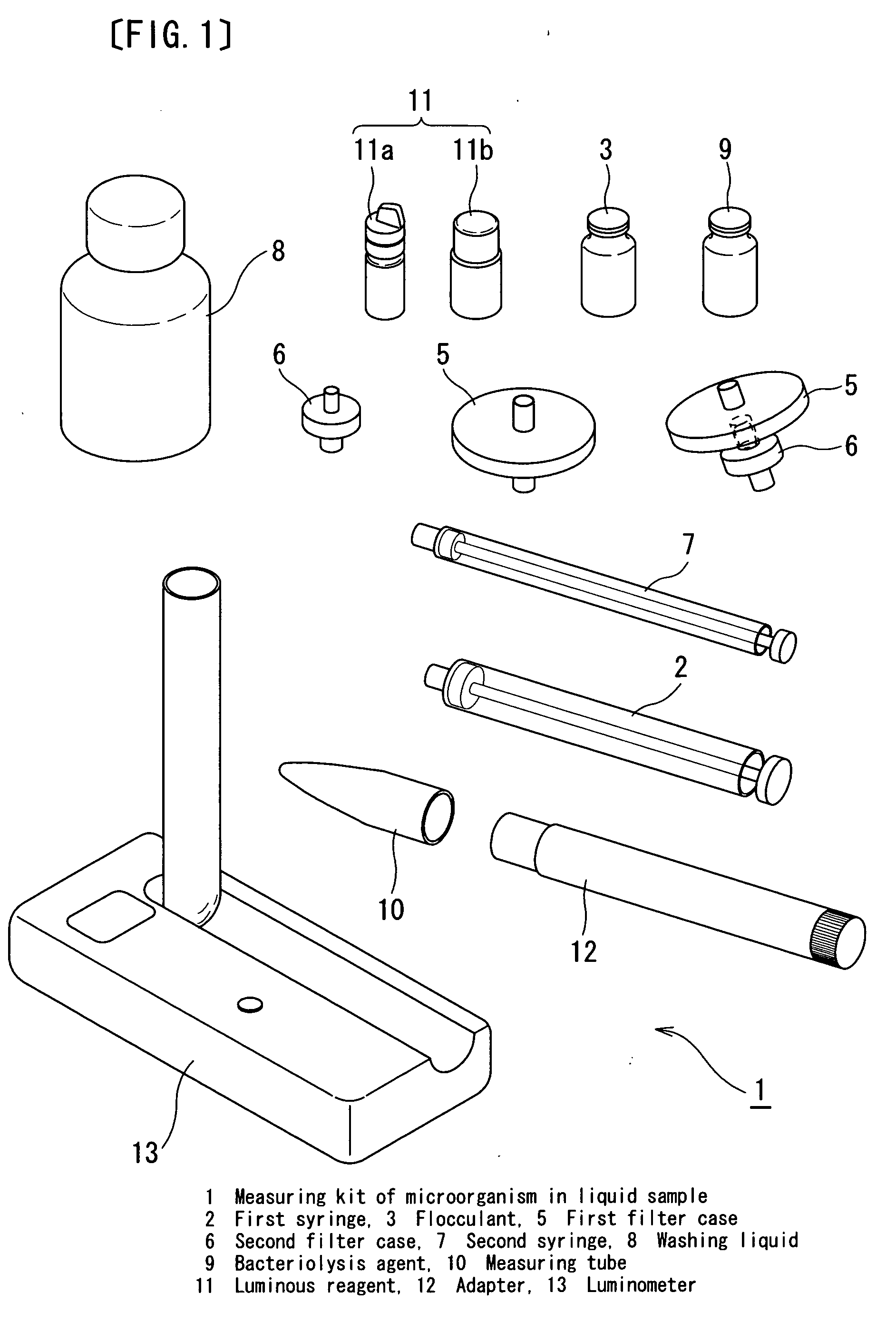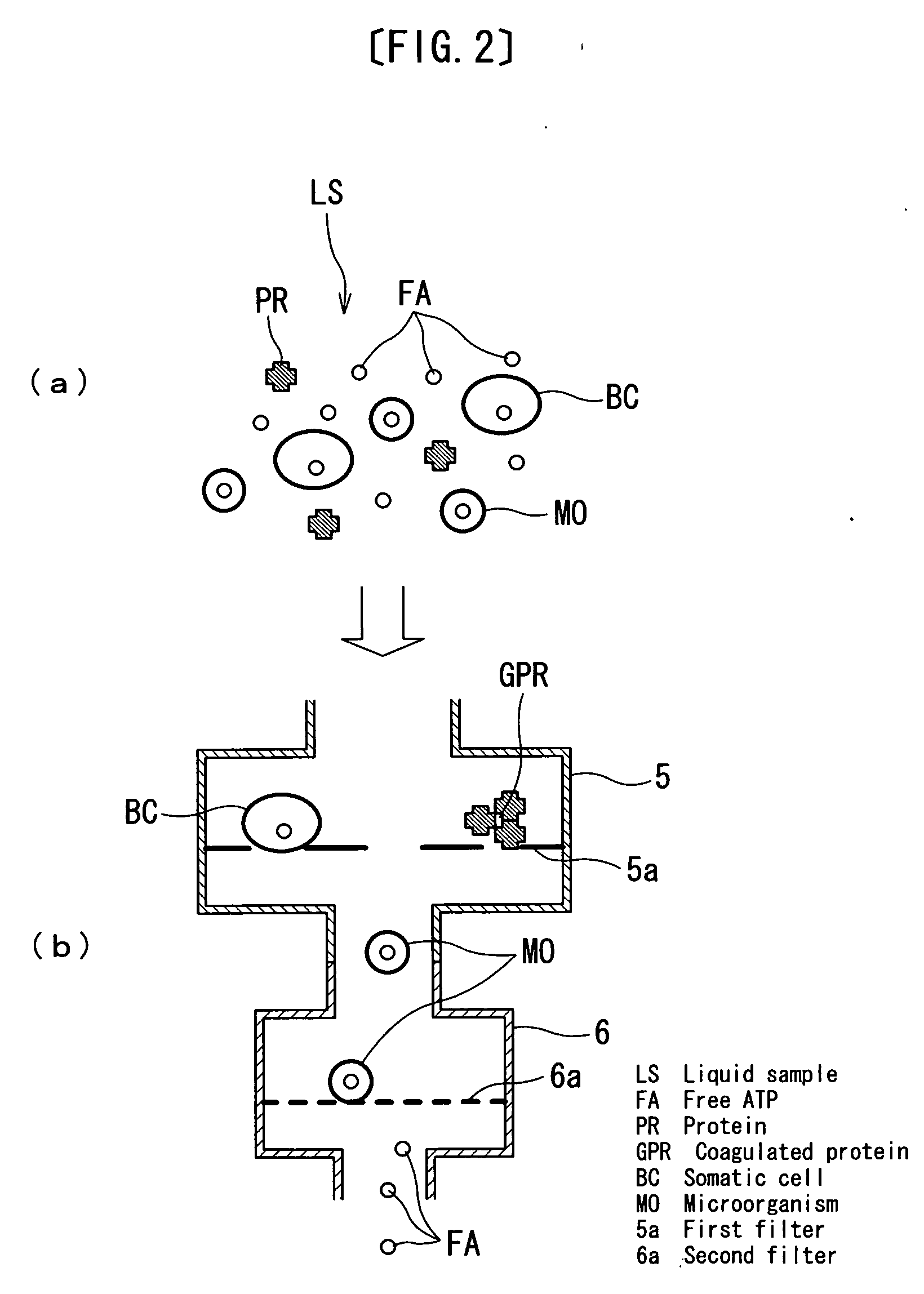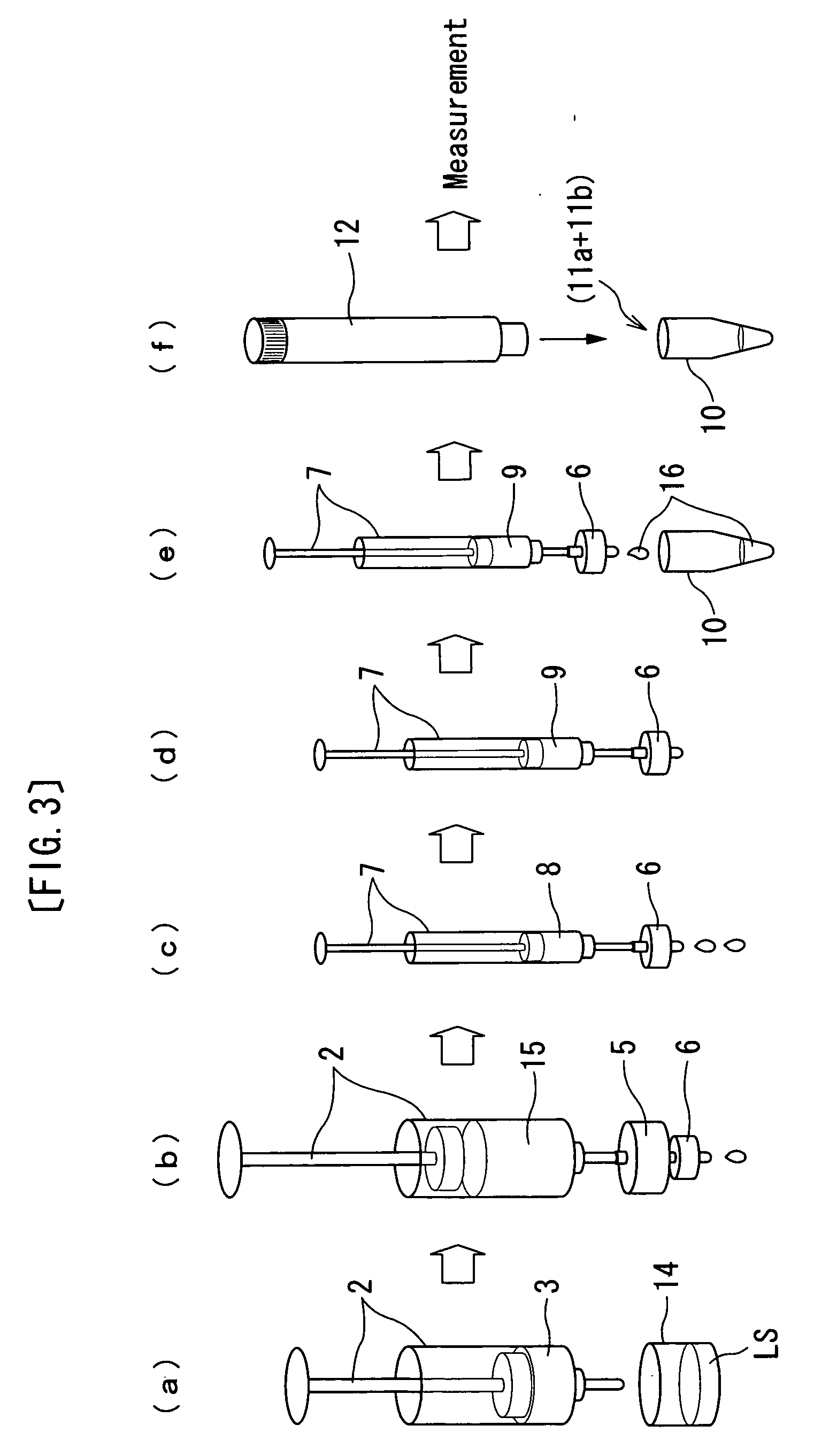Measuring kit, measuring method and measuring apparatus of microorganism in liquid sample
- Summary
- Abstract
- Description
- Claims
- Application Information
AI Technical Summary
Benefits of technology
Problems solved by technology
Method used
Image
Examples
first embodiment
[0094] First, a measuring kit, a measuring method and a measuring apparatus of microorganisms in a liquid sample according to a first embodiment of the invention is described referring to FIG. 1 to FIG. 6. FIG. 1 is a perspective view showing a measuring kit of microorganisms in a liquid sample according to the first embodiment of the invention. FIG. 2 (a) and (b) is a pattern diagram showing a measurement principle of a measuring method or a measuring apparatus of microorganisms in a liquid sample according to the first embodiment of the invention. FIG. 3 (a), (b), (c), (d), (e) and (f) is an explanatory drawing showing a sequence of the measuring method of the microorganisms in the liquid sample according to the first embodiment of the invention. FIG. 4 is a drawing showing a measurement result of a first example in the measuring method of the microorganisms in the liquid sample according to the first embodiment of the invention, while compared with a first comparative example, in...
first example
[0108] Next, the present invention is described specifically on the basis of a first example of the measuring method of the microorganisms in the liquid sample according to the first embodiment of the present invention.
[0109] A standard culture fluid of the present first example and a comparative example contains 0.5% of a yeast extract, 1.5% of a peptone, 0.5% of a sodium chloride and 0.5% of a potassium hydrogenphosphate. A luminous reagent consists mainly of a luciferin, a luciferase and a magnesium acetate as a main component and is dissolved in a Tricine buffer solution.
[0110] 20 ml of the standard culture fluid was added with a small amount of a raw milk, incubated and centrifuged. Then, the culture fluid was thrown away. Thereafter, precipitated microbes were added with 20 ml of a commercially available milk, which was checked to be aseptic, and agitated well. This was diluted with a similar commercially available milk in five levels so as to make them samples.
[0111] Used ...
second example
[0117] Next, the present invention is described specifically on the basis of a second example of the measuring kit and the measuring method of the microorganisms in the liquid sample according to the first embodiment of the present invention referring to FIG. 1 to FIG. 3. In the present second example, measurement of microorganisms was conducted by use of the above-mentioned measuring kit 1 of the microorganisms in the liquid sample according to the present first embodiment.
[0118] A standard culture fluid of the present second example contains 0.5% of a yeast extract, 1.5% of a peptone, 0.5% of a sodium chloride and 0.5% of a potassium hydrogenphosphate. A luminous reagent 11 is made by dissolving powders 11b, which consists mainly of a luciferin, a luciferase and a magnesium acetate as a main component, in a Tricine buffer solution 11a.
[0119] 20 ml of the standard culture fluid was added with a small amount of a raw milk, incubated and centrifuged. Then, the culture fluid was thr...
PUM
| Property | Measurement | Unit |
|---|---|---|
| Fraction | aaaaa | aaaaa |
| Fraction | aaaaa | aaaaa |
| Time | aaaaa | aaaaa |
Abstract
Description
Claims
Application Information
 Login to View More
Login to View More - R&D
- Intellectual Property
- Life Sciences
- Materials
- Tech Scout
- Unparalleled Data Quality
- Higher Quality Content
- 60% Fewer Hallucinations
Browse by: Latest US Patents, China's latest patents, Technical Efficacy Thesaurus, Application Domain, Technology Topic, Popular Technical Reports.
© 2025 PatSnap. All rights reserved.Legal|Privacy policy|Modern Slavery Act Transparency Statement|Sitemap|About US| Contact US: help@patsnap.com



